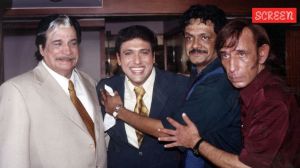After Evita, it is time to celebrate the magic of legendary
BUENOS AIRES, July 5: Whether loved or loathed, Ernesto Che Guevara and Evita Peron are the two great mythical figures of Argentina. After ...

BUENOS AIRES, July 5: Whether loved or loathed, Ernesto Che Guevara and Evita Peron are the two great mythical figures of Argentina.
After the enormous ballyhoo over the film Evita, with pop star Madonna playing the President’s wife who died of cancer in 1952, the spotlight now falls on Guevara as the marketing machine begins to gear up for the 30th anniversary of the revolutionary’s death.
Argentina, a country which tends to idolise its dead, is getting ready to celebrate – El Che – who was captured and killed by government troops in Bolivia while attempting to instigate a revolt.
Why is Che so popular? is the question asked by some in Buenos Aires. They point to the problems experienced by Che’s comrade Fidel Castro in Cuba and the failure of communism in Europe.
Everything about Che is exotic, and that appeals to people, is the answer given by Horacio Gonzalez, Sociology professor at the University of Buenos Aires. The media has also contributed in no small part to creating the legend, he believes.
He recalls how a series of lectures on Che given by different professors was turned by the media into a university chair on the legendary guerilla leader. He finds both ageing leftists and young people turning up for his lectures, “But honestly, what exactly they want I don’t know myself sometimes.”
Those interested in the man Che Guevera have certainly little difficulty in quenching their thirst for knowledge. Many stands at a recent international book fair featured new publications about Che, a doctor by training who became a Cuban minister and a rebel in Africa and Bolivia.
The book shops and newspapers literary sections have been full of reviews of documentary books, novels or Che’s diary written in Bolivia.
Che Guevara has been sent into the kingdom of myths, says writer Tomas Martin Eloy, author of Santa Evita, a novel over Evita Peron which has received international acclaim. The myths themselves are not discussed which, he says, is a mistake.
Anibal Di Salvo has directed the first film this year over the man who swapped his ministerial chair in Cuba for the life of a guerilla fighter in the jungles of Bolivia. Unfortunately Che looked more like a bearded south Tyrolean mountain climber than a man who wanted to sweep the communist revolution throughout the whole of Latin America.
The film never really took off, and box offices were soon selling tickets at half price. Yet Argentina’s film makers are undeterred by the flop. At least five further Che films are set for release before October.
Che fans have been finding more excitement visiting the actual place he met his demise. The small Bolivian village of Vallegrande is experiencing a Che boom, as Argentina’s largest newspaper, Clarin, recently reported. Although off the beaten track, a steady stream of tourists from Japan, Italy and Germany and other countries have been making a pilgrimage to the village.
It is long been claimed that Che’s remains lie buried under a landing strip at Vallegrande. Now Cuban specialists say they have found six human skeletons after digging under the airstrip.
“We are scientifically certain that he (Che) is among them,” a Cuban anthropologist said.



- 01
- 02
- 03
- 04
- 05




























